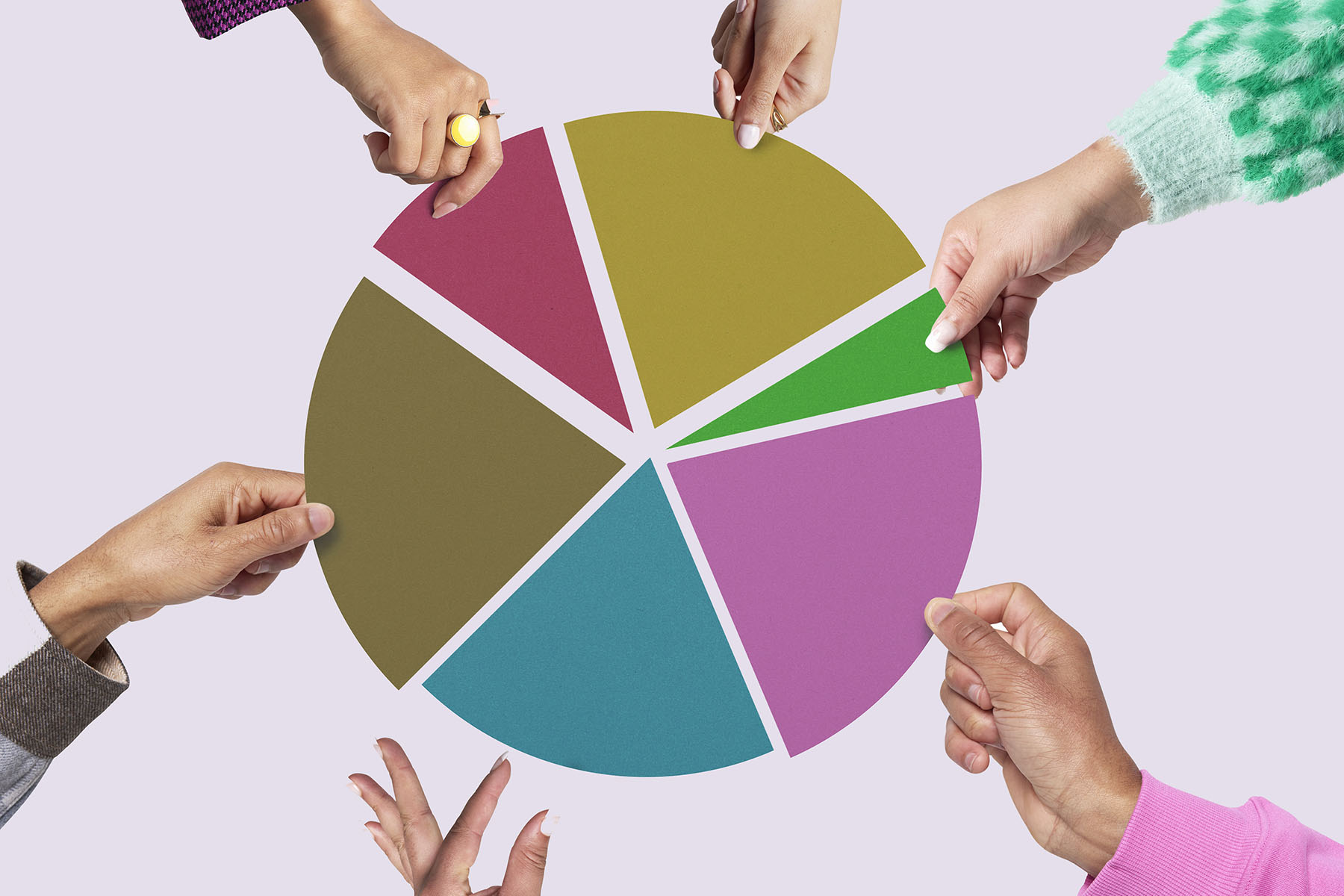At The 19th, we’re committed to publishing journalism that you can trust throughout the critical moments that shape our democracy and our lives. Show your support during our Fall Member Drive, and your donation will be matched. Double your gift today.
Data on LGBTQ+ people has long been weaponized against them. The counting of individuals, from the pink triangles of Adolf Hitler’s Germany and the outing of homosexuals by the House Un-American Activities Committee, destroyed lives. Today, data on transgender Americans is cited in legislation and court cases seeking to restrict their rights.
But quantitative data at scale is also necessary to understand the needs of LGBTQ+ people. Public health funding is tied to demonstrated need, which surveys can easily prove. There is joy in researching how LGBTQ+ people live, and qualitative studies can only provide so much information.
A new report released Tuesday from The Urban Institute, a nonprofit research organization studying social equity and mobility, provides recommendations for gathering, analyzing and disseminating data on gender and sexuality as part of the organization’s “Do No Harm” research project.
“Do No Harm” is a series of recommendations for working with data more equitably, and reckons with the ways in which quantitative research has hurt the communities it purported to serve. The project started after the national 2020 racial reckoning, with funding from the Tableau Foundation.
The 19th sat down with three of the report’s co-authors to discuss why these recommendations are needed in this moment. Jonathan Schwabish is a senior fellow at the Urban Institute, and leads the Do No Harm project. Two others, Donovan Harvey, research associate, and Amy Rogin, data scientist, contributed to “Collecting, Analyzing, and Reporting Gender and Sexual Orientation Data.”
This interview has been edited for length and clarity.
Why did it feel urgent for the Urban Institute to weigh in on how best to use LGBTQ+ data?
Donovan Harvey: The Trump administration was a particularly perilous time for data related to sexual and gender minorities [SOGI]. We saw a lot of really interesting initiatives pause, a lot of new questions or data products halted, and more importantly, we saw the increased risk associated with collecting SOGI data.
We talk about some examples in the report: In Texas, the secretary of state asked for what amounted to a register of the folks who are gender-nonconforming in the state. When we are seeing how it might be used to harm LGBTQ+ people, it created a very clear opportunity to say that the data collection itself is important, but also that protections that surround collecting data, which have always been important historically, are especially important right now.
Amy Rogin: Collecting this data is so important, because in some cases, it’s how resources are being distributed like federal funding or health funding. If we don’t understand accurately where these populations are, and what it looks like, then we’re not gonna be able to do that and have impact in that space.
-
More from The 19th
- LGBTQ+ people of color face greatest risk from spike in hate crimes. Why doesn’t FBI data include them?
- ‘Systematically erased’: Middle Eastern and North African women and LGBTQ+ Americans don’t see themselves in U.S. data
- Queer women are prioritizing climate and health issues over LGBTQ+ rights, new poll shows
What are the stakes when data on LGBTQ+ populations is gathered and analyzed, or visualized in a biased way?
Rogin: Doing good LGBTQ research is just doing good research, be it qualitative or quantitative. There’s the idea of personhood as data collection. One of the experts that we interviewed really talked about that concept of, if you’re not represented in data, like if this population isn’t visible, it doesn’t mean that they don’t exist.
The reason I love data viz is it’s a translation of numbers to images, and that’s how you’re now interpreting that language. With any translation, it can be accurate or inaccurate. It can be really easy to misrepresent what we’re showing in ways that researchers don’t even realize they’re doing.
Jonathan Schwabish: The challenge with data viz in the LGBTQ space is there’s just not a ton of examples out there because we don’t really have good data in that realm of government, nationally representative data.
That is an opportunity to have this report out, because we can start to help shape those decisions and people start to make their visualizations as we start to get more and more data.
Harvey: To Amy’s point, the biggest risk is not collecting the data at all.
But even if the data is collected, there can be really material harms in collecting that data poorly. One of the things that came up a lot in our interviews is this idea where you’ll see in surveys: man, woman, sometimes transgender as a gender category. What will often happen is there’ll be an “other” or fill-in category, but in practice those either get dropped or get coded into man or woman anyway. If you’re thinking about it from a data integrity standpoint, and maintaining that relationship with the people on whom you are researching, that’s functionally lying to folks.
This is almost a broad kind of social issue, but thinking about this as a queer man, data shapes the stories that we tell about ourselves. We reference some of the very early sex research that found same gender sexual behavior and sexual attraction was a lot more common than we thought, especially one-off experiences. That being in the world changes the way people think about themselves and their attractions and their desires and their behaviors. If that data is reported in a biased or distorted way, similarly, the stories that queer folks are going to tell about themselves will be biased and distorted in the direction of heteropatriarchy. I think that’s why clear, unbiased data collection is important.
In the report you mention how it’s a common mistake for gender identity, gender and sexual orientation to be conflated. I see this a lot in my work at The 19th when I’m reviewing data from many organizations. What are the consequences when researchers group gender identity and sexual orientation all into this one big category?
Rogin: You’re just not collecting the data that you say you’re collecting or want to collect. We have a whole section in the report about making sure you’re asking what you think you’re asking. And if you don’t need to be asking about other things, don’t ask about that. It’s parsing out that nuance to make sure that you are actually getting the data that you need.
The last Do No Harm report was on data security. This report also has a large section on data privacy and data security. What would you tell someone who is worried about sharing their information with the researcher? Do you have any tips on maybe what people should be aware of when participating in this kind of research?
Schwabish: It’s necessary for the interviewer to follow responsible and ethical data collection processes. There are lots of statistical techniques out there, and data security techniques out there that people can use. But I think at its core, it’s the interviewers responsibility to inform the interviewee about how they’re protecting and safeguarding their data.
Rogin: Something that came up a lot was this tension between methodological constraints for asking these questions and then what, in a perfect world, researchers would be able to ask. Even just adding a note like, “we are only able to include straight, gay, lesbian, bisexual, because of sample size.” That tells the person taking the survey why it was done, instead of it being assumed that it was an oversight. So I think just even sharing that can be a big step.
Harvey: If there was one thing I’m telling a friend who’s asked to participate in a survey, it’s that the risk, at least in the United States, of intentional data misuse is still relatively low. If you complete a survey, it is overwhelmingly likely that your responses are going to be completely anonymous, and they will never be used in a way inconsistent with what the researcher told you at the time and the consent.
But, this is a bit to Amy’s point on clarifying language, if there’s any doubt, feel very comfortable reaching out to the researcher saying something like, “Hey, in my state, we have a really anti-LGBT governor. How are you sure that this data won’t be used in a way that’s going to hurt me or those close to me?”
You consulted many different sources when putting together this guide, and you are all experts in your own right. What was one of the most interesting or surprising things you learned while putting together this report?
Schwabish: A lot of the things that we explored were very new to me, being in the position of a straight White cisgender male, being in that position of privilege. A specific thing that I hadn’t really thought about, that Donovan mentioned earlier is that the word “transgender” is an adjective, it’s not a noun. So then when surveys [give gender options of] man/woman/transgender/other, transgender is not, grammatically speaking at least, a real option. It’s not a correct option. And I’ve never really sat down and thought about that before.
Harvey: One of the sections I was most heavily involved in writing was the historical context for LGBT data collection section. And one of the overarching themes of the report is that language changes, both very broadly, but also within specific communities, terms have different meanings. And one of the interesting combinations of those two things was the evolution of the word “transgender,” where a lot of the early gender studies research and even use among the community, purposefully made the term transgender really expensive to include folks like crossdressers. As time has gone on, the term has become increasingly and increasingly narrow. And thinking about the historical arc of the term, and the nuance and the identity and the meaning that it takes on to people when they use it, to describe themselves, to say nothing of asking about it in a survey context, I thought was super interesting.
And I’m in a different position from Jon. I’m around gay people all the time! I’m a queer man, all my friends are queer. Learning and seeing we’re queer in a time and place, and understanding how queer in different times and different places looked, was a really really interesting thing to encounter.
Rogin: Mine’s a nerdier answer. I just have so much fun learning about the methodology of how we ask these questions. There’s a whole field of study of when you ask someone a question on a survey, how they actually interpret it.
And all the way through the process, from developing the questions, to administering it, there’s the importance of having queer people being the ones to analyze the data.
It was really fun to be able to work on this really interesting project, but also see your own identity reflected, and reflect on those own questions myself.







